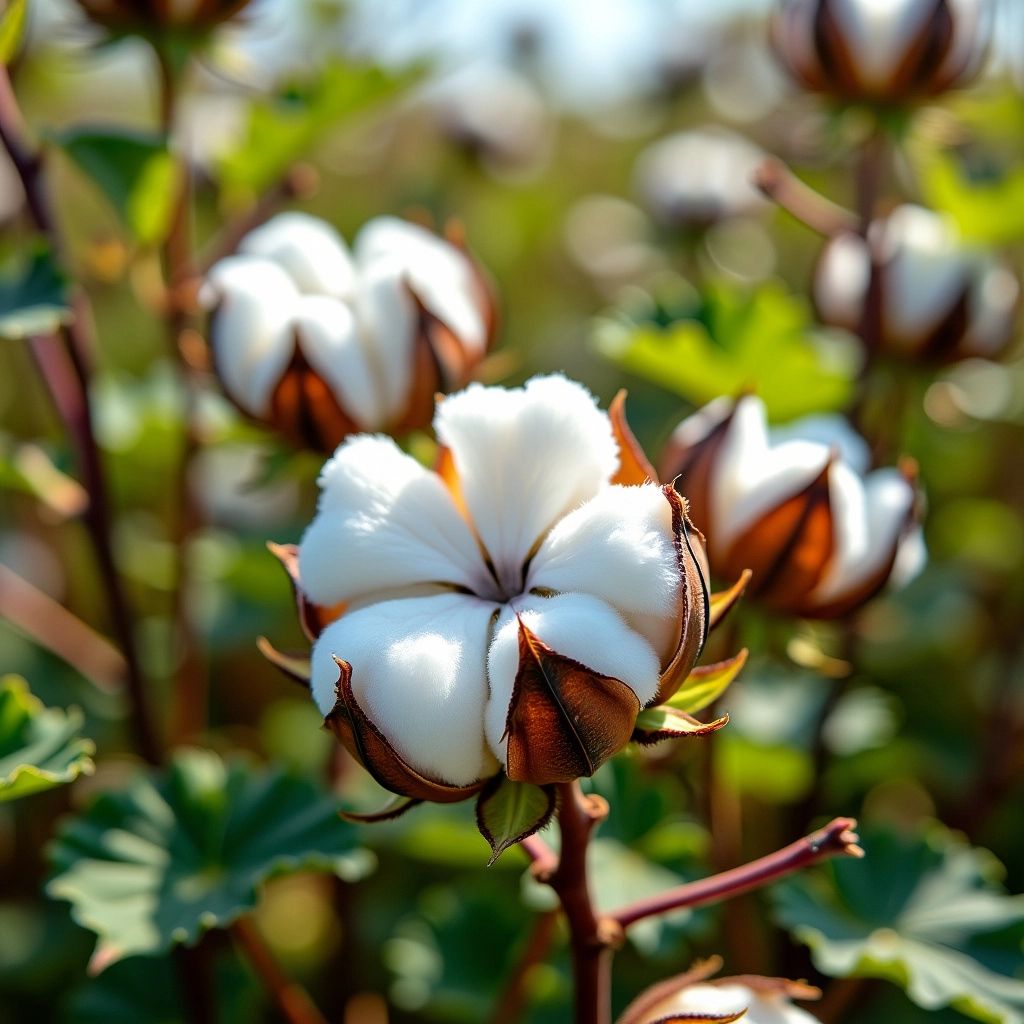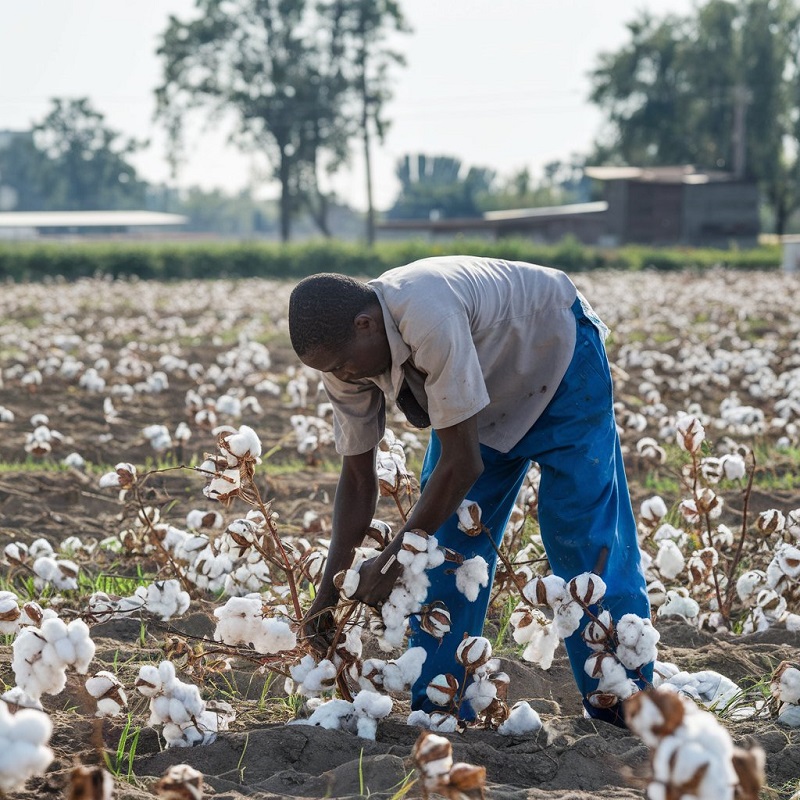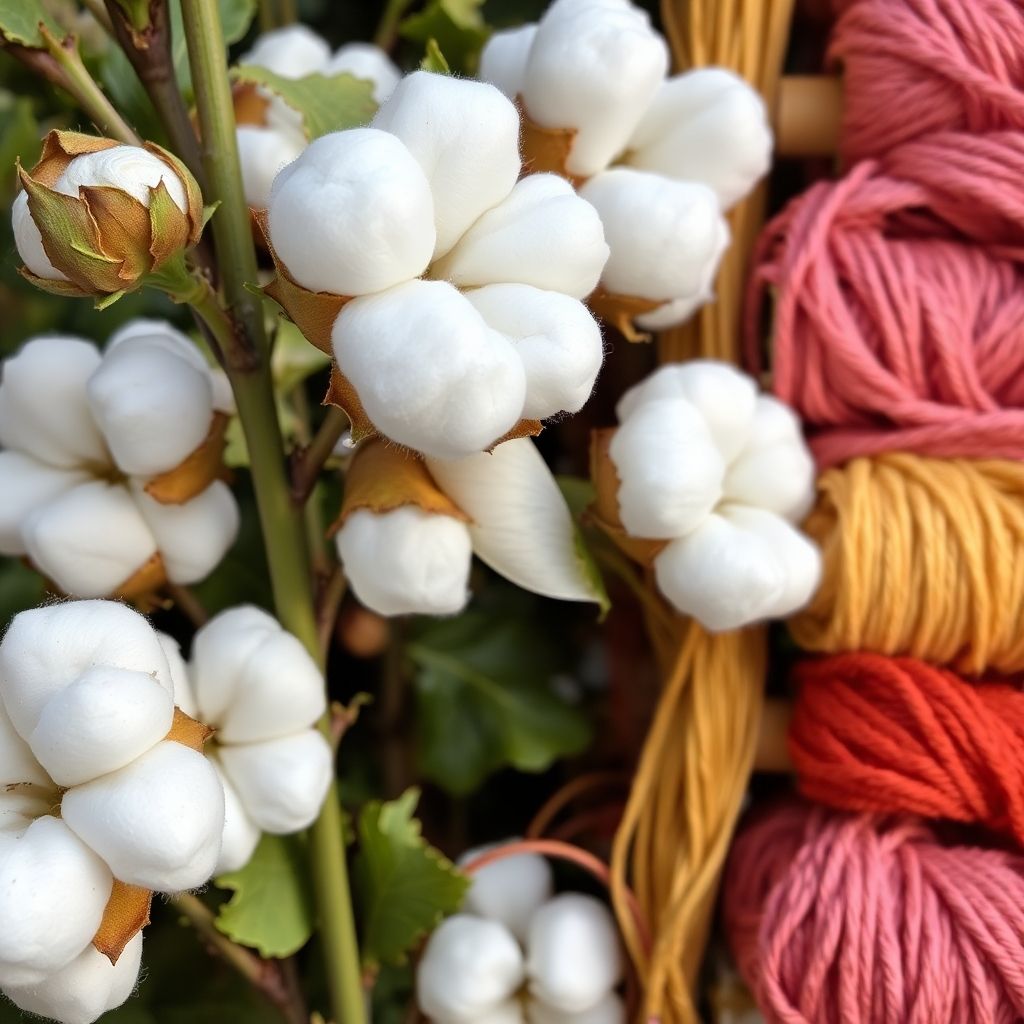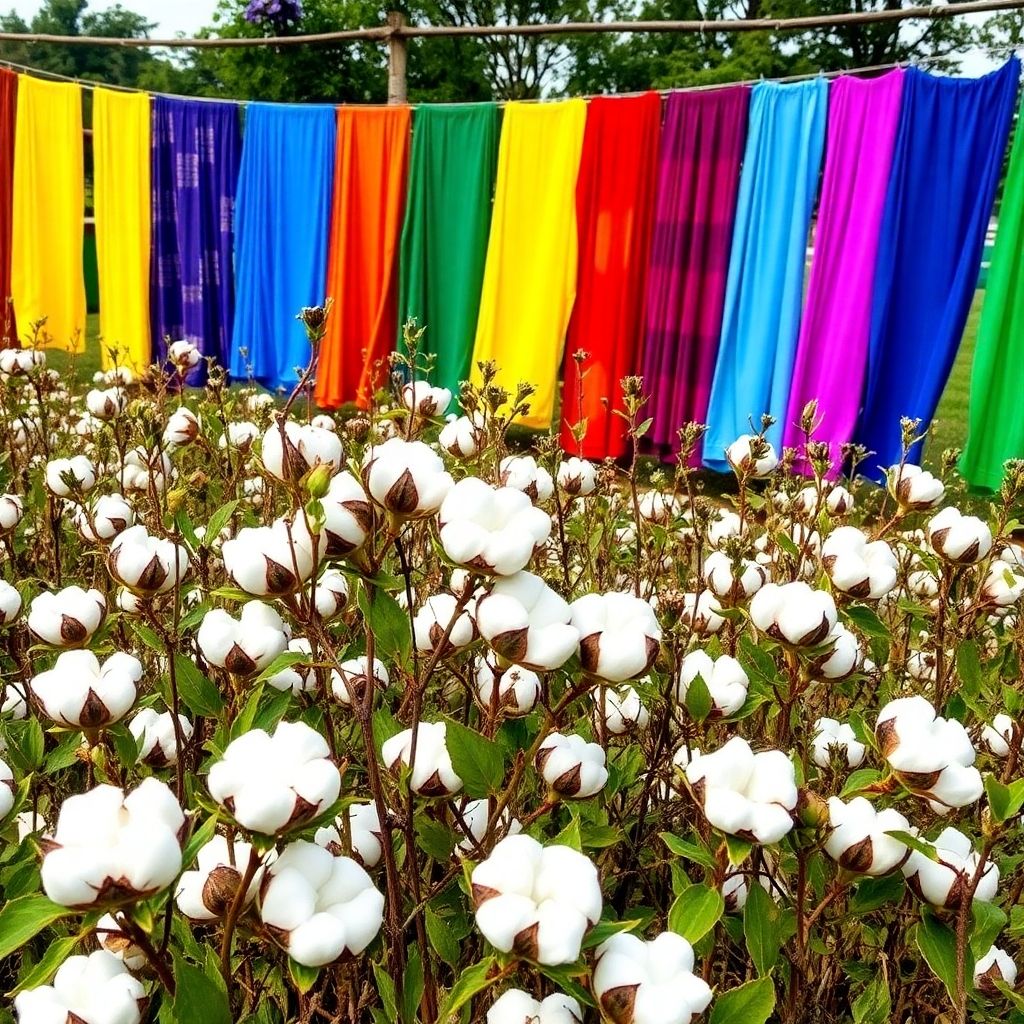Discover how cotton from plant turns into the fabric we wear every day. Learn about the stages of a cotton plant’s growth, from seed to soft, fluffy bolls, in this easy-to-understand guide
Where Does Cotton Come From?
Cotton is a neat plant that gives us the soft fabric we love in clothes. It grows in warm places, like Texas, India, and China. The plant produces fluffy white balls called bolls, which hold the cotton fibers. These fibers are what get turned into yarn, which is then used to make all kinds of clothes.
How Cotton Grows and Where It Likes to Grow
Cotton plants love sunshine, and they need some rain, but not too much! Places like India, China, and the U.S. are perfect for growing cotton. Texas, for example, grows tons of cotton each year.
5 Stages of a Cotton Plant?
The cotton plant grows through five important stages:
- Germination: It all starts with a seed! When the seed is put in good soil, and it gets enough water and sunlight, it begins to sprout and grow.
- Seedling: The sprout grows bigger and starts to look like a little plant with leaves. It’s kind of like the baby stage for the cotton plant.
- Square Formation: As the plant keeps growing, small buds (called “squares”) pop up. These are where the cotton flowers will appear.
- Flowering: The squares turn into pretty flowers, but they only stay around for a few days. After the flowers drop off, the cotton bolls start to grow.
Boll Development: This is the last stage, where the fluffy white bolls fully form. When they’re ready, the bolls are picked, and the fibers inside are used to make fabric.
Harvesting Techniques and Technologies
When the cotton bolls are ready, it’s time to harvest! Farmers can pick them by hand or use machines to make it faster. This is important because the timing has to be just right—if it rains too much, the cotton can get ruined. After harvesting, the cotton goes through a process called ginning, where the fluffy fibers are separated from the seeds. This step is crucial because it prepares the cotton for the next stages of making fabric.
In 2022, India and China produced a whopping 6.7 million and 5.6 million metric tons of cotton, respectively. The United States, while third in production, is the largest exporter of raw cotton globally. This shows just how important cotton is in our world today!
Processing Cotton: From Raw Fiber to Usable Material
Ginning: Separating the Fiber from the Seed
After cotton is harvested, it goes through a process called ginning. This is where the fluffy cotton fibers are separated from the seeds. This step is super important because it gets rid of the seeds and any leftover plant bits. Ginning is usually done using a machine called a cotton gin, which makes the job a lot easier and faster.
Carding and Combing: Preparing the Fiber
Once the cotton is ginned, it needs to be cleaned up a bit more. This is where carding comes in. Carding straightens out the fibers and gets them ready for the next step. Sometimes, they also use combing, which is like giving the cotton a good brush to make sure all the fibers are nice and even. This helps in making the cotton stronger and more uniform.
Spinning: Turning Fiber into Yarn
Now that the cotton fibers are all set, it’s time to spin them into yarn. Spinning machines twist the fibers together to create long strands of yarn. This yarn is what we use to make all sorts of cotton fabrics. It’s amazing to think that from a simple plant, we can create something so useful!
The journey of cotton from plant to fabric is quite a ride. Each step is crucial in making sure we get the best quality cotton for our clothes and other products. Understanding this process helps us appreciate the cotton from plant to fabric even more!
Weaving and Knitting: Creating Fabric from Cotton Yarn
When it comes to making fabric from cotton yarn, there are two main methods: weaving and knitting. Weaving is all about interlacing two sets of yarns—the warp and the weft—at right angles. This creates a strong and stable fabric, usually in rectangular or square shapes. On the other hand, knitting involves looping the yarn together, which makes the fabric stretchy and comfy.
Both methods have their own unique styles and uses. For instance, woven fabrics are often used for shirts and pants, while knitted fabrics are great for sweaters and socks. The choice between weaving and knitting can really change how the final product feels and looks.
Technology plays a big role in both processes. Modern machines can weave or knit fabric much faster than people can do by hand. This means we can get more fabric made in less time, which is super important for the fashion industry.
Dyeing and Finishing: Adding Color and Texture to Cotton Fabric
Traditional Dyeing Methods
When it comes to giving cotton fabric its vibrant colors, traditional dyeing methods have been around for ages. These techniques often use natural materials like plants and minerals. For example, indigo from plants can create beautiful blue shades. These methods are not just about color; they also connect us to history and culture.
Modern Dyeing Techniques
On the flip side, modern dyeing techniques have taken things to a whole new level. Factories now use synthetic dyes that can produce a wider range of colors and are often more consistent. However, these methods can sometimes harm the environment. It’s a balancing act between getting the perfect color and being kind to our planet.
Finishing Processes for Texture and Durability
After dyeing, cotton fabric goes through finishing processes. This includes washing, bleaching, and sometimes even adding special coatings to make the fabric softer or more durable. For instance, a cotton shirt might be treated to resist wrinkles. This step is crucial because it helps the fabric last longer and feel better against your skin.
The Fashion Industry’s Love Affair with Cotton
Cotton has been a favorite in the fashion world for ages. It’s not just about comfort; it’s about style too! From casual t-shirts to fancy dresses, cotton is everywhere. Its softness and breathability make it perfect for all kinds of clothing. You can wear it in summer without feeling too hot, and in winter, it can keep you warm when layered right.
Fashion designers love cotton because it’s super easy to work with. They can dye it in any color and create all sorts of patterns. This means you can find cotton in every store, from big brands to local shops. Plus, it’s not just for clothes; cotton is also used in home decor, like curtains and bed sheets, making our homes cozy and stylish.
But here’s the cool part: cotton is also becoming more sustainable. Many brands are now focusing on using organic cotton, which is better for the planet. This means less pollution and healthier farming practices. So, when you choose cotton, you’re not just picking a comfy fabric; you’re also making a choice that can help the environment. The journey of cotton from the field to your closet is truly amazing!
Sustainability and Ethical Considerations in Cotton Production
Environmental Impact of Cotton Farming
Cotton farming has a big impact on our planet. The cotton industry faces many sustainability challenges. These include using too much water and polluting the environment with pesticides. Farmers are starting to realize that they need to change how they grow cotton to help the Earth. They are looking into better ways to manage pests, using less water, and even trying organic farming, which avoids harmful chemicals. This shift is important for keeping cotton a viable crop while also protecting our environment.
Fair Trade and Ethical Labor Practices
Another big issue is how workers are treated in the cotton industry. Many farmers and workers don’t get paid fairly for their hard work. This has led to a push for fair-trade cotton, which ensures that farmers receive a fair price for their crops. By supporting fair-trade practices, we can help improve the lives of those who grow the cotton we use every day.
Innovations in Sustainable Cotton Production
There are also exciting new ideas in cotton production that can help make it more sustainable. For example, some companies are recycling cotton waste to create new products. This not only reduces waste but also saves resources. By adopting these innovative practices, we can enjoy our favorite cotton clothes while also caring for our planet.
The journey of cotton from plant to fabric is not just about fashion; it’s also about making choices that are good for the environment and the people who grow it. By being aware of these issues, we can all play a part in making cotton production more sustainable and ethical.
The Future of Cotton in Fashion and Sustainability
Trends in Cotton Fabric Innovations
Cotton is not just a fabric; it’s a part of our lives! As we look ahead, there are exciting trends in cotton fabric innovations. New technologies are making cotton more durable and eco-friendly. For instance, some companies are using recycled cotton, which helps reduce waste and keeps our planet cleaner. This means we can enjoy our favorite cotton clothes while being kind to the Earth!
The Role of Cotton in Circular Fashion
Circular fashion is all about reusing and recycling materials. Cotton plays a big role here! Instead of throwing away old clothes, we can recycle them into new fabrics. This not only saves resources but also cuts down on pollution. Imagine a world where your old t-shirt becomes a stylish new dress! That’s the magic of circular fashion.
Consumer Choices and Cotton Sustainability
As shoppers, we have the power to make a difference. Choosing sustainable cotton products can help support better farming practices. When we buy organic or recycled cotton, we’re saying yes to a healthier planet. Every little choice counts! So, next time you shop, think about how your choices can help make cotton more sustainable.
In conclusion, the future of cotton in fashion is bright! With innovations, circular practices, and mindful consumer choices, we can enjoy our cotton clothes while caring for our planet. Let’s keep the journey of cotton going strong!








